PIC 16F72 Microcontroller Operated Steeper Motor speed control is one of the most versatile forms of generation control by adjusting coal feeding rate. This system is try to improve the efficiency of CHP and also reliability of the system. This system adjust the feed rate through controlling speed of the Motor of the Conveyor Belt of feeding coal to Crusher of the system considering the demand of Energy in peak & lean hours. If any abnormality occurs this system has interlocks to tripped the motors and avoid the damages of the system.
Keywords |
| Microcontroller, Coal Handling Plant (CHP), Stepper Motor, Generation Control |
INTRODUCTION |
| The main motto of this system is to control the generation of energy depending on the requirement load demand of the
system. To develop the scheme of automatic generation control, variation of coal feeding rate to Coal Handling Plant in
made automatic depending on the load demand. Safety interlocks in between the Motors employed in the CHP are also
developed. To make the process automatic, a Stepper Motor is used in the Power System controlled by Microcontroller.
So, the system becomes more flexible due to use of the Microcontroller as the coal feeding rate can be customised as
per requirement of the requirement of the system. |
A. SYSTEM DESIGN |
| In this system, a Stepper Motor is used for system automation. A step motor, also called a stepper motor, is a type of
synchronous electric motor which rotates through multiple small steps. The shaft is pulled around each step of the
device electromagnetically through the use of a step controller mechanism. |
| This type of motor uses a controller to convert electricity into mechanical energy as opposed to a generator which
converts mechanical energy into electricity. It does this by sending electrical pulses which energize the permanent
magnets in the motor. Since there is slight pole pitch displacement between the two stator coils, this causes the rotor to
move one "step" for each pulse. |
| Step motors can be differentiated by a variety of features and properties, including DC operating voltage, degree of step
angle, holding torque, steps per revolution and others, as well as physical properties like length, diameter and shaft size.
Be sure you are selecting the right one for the job. It can also be used with gears to convert the rotational movement
into use for applications requiring linear displacement. |
| There are multiple benefits to the use of a step motor. For one, the motor has complete torque even when standing still,
as long as the windings are wound and energized. Furthermore, step motors require no brushes to facilitate the rotation
the way that brush DC motors do, so there is no need to worry about replacing worn out brushes. If you have an
application that needs to be in continuous or almost continuous motion for a very long time, step motors can be
extremely cost effective. When you consider the expense of shutting your operation down while you replace or repair
brushes or a commutator, it's easy to see how this type of motor can pay for itself. |
| Step motors can handle high speed, high power jobs and are known to provide good accuracy and speed relative to their
simplicity and cost. |
| In this system, to control the Stepper Motor, a Microcontroller PIC16F72 is used. A driver circuit is prepared by using
ULN2803 and the stepper motor is connected to the Driver circuit. Necessary program is developed and burned in the
Microcontroller to run the Stepper motor. |
| An inductive Proximity Sensor is provided to turn off all motors due to presence of any Metal of the conveyor belt of
system. The system also senses the coal feeding rate and requirement of generation at that time and automatically
controls the coal feeding rate as per load demand in the system. |
INTRODUCTION WITH BLOCK DIAGRAM OF HARDWARE REQUIREMENTS |
| For applications where precise measuring of a motors' rotor position is critical, a Stepper Motor is the best choice.
Stepper motors operate differently from other motors; rather than voltage being applied and the rotor spinning
smoothly, stepper motors turn on a series of electrical pulses to the motor's windings. Each pulse rotates the rotor by an
exact degree. These pulses are called "steps", hence the name "stepper motor". Block diagram of stepper motor
operation as shown in fig.1 |
| In this system a Unipolar Stepper Motor used as shown in Fig.2 with specification: Maximum Voltage: 5V DC, Step
angle: 1.8 degree, Steps per revolution: 200, Unipolar stepping motors with 5 or 6 wire are available and usually wired
as shown in Fig.3 with a centre tap at terminal 1 and 2 on each of the two windings. In use the centre taps of the
windings are typically wired to the positive supply and the two ends of each winding are alternately grounded to
reverse the direction of the field provided by the winding. |
| A. PIC16F72 MICROCONTROLLER |
| In this system PIC16F72 Microcontroller used because there have some advantages. |
| The advantages of PIC Microcontrollers over the other Microcontrollers of other family are as follows : |
| It is a RISC (Reduced Instruction Set Computer) design. |
| Only thirty seven instructions to remember. PIC16F72 is a RISC microcontroller, that means that it has a
reduced set of instructions, more precisely 35 instructions (ex. Intel's and Motorola's microcontrollers have over
hundred instructions). All of these instructions are executed in one cycle except for jump and branch
instructions. |
| Its code is extremely efficient, allowing the PIC to run with typically less program memory than its larger
competitors. |
| It is low cost, high clock speed. |
| PIC microcontrollers (Programmable Interface Controllers), are electronic circuits that can be programmed to carry out
a vast range of tasks. They can be programmed to be timers or to control a production line and much more. |
| They are found in most electronic devices such as alarm systems, computer control systems, phones, in fact almost any
electronic device. |
| Many types of PIC microcontrollers exist, although the best are probably found in the GENIE range of programmable
microcontrollers. These are programmed and simulated by Circuit Wizard software. PIC Microcontrollers are relatively
cheap and can be bought as pre-built circuits or as kits that can be assembled by the user. It has 28-Pin, 8-Bit CMOS
FLASH MCU with A/D Converter. Pin Diagrams as shown in Fig.4. |
| B. REGULATED POWER SUPPLY |
| Almost all electronic devices used in electronic circuits need a dc source of power to operate. The source of dc power is
used to establish the dc operating points (Q-points) for the passive and active electronic devices incorporated in the
system. The dc power supply is typically connected to each and every stage in an electronic system. It means that the
single requirement common to all phases of electronics is the need for a supply of dc power. For portable low-power
systems batteries may be used, but their operating period is limited. Thus for long time operation frequent recharging or
replacement of batteries become much costlier and complicated. More frequently, however, electronic equipment is
energized by a power supply, derived from the standard industrial or domestic ac supply by transformation,
rectification, and filtering.(The combination of a transformer, a rectifier and a filter constitutes an ordinary dc power
supply, also called an unregulated power supply). For many applications in electronics, unregulated power supply is not
good enough for continuous operation. |
| To run the system, both +12Volt, -12Volt and both +5Volt, -5Volt regulated DC supply are required. To develop this
circuit, a Centre tap Transformer 230/12V – 0V – 12V, 1Amp is required to step down the supply voltage. Through full wave bridge rectifier circuit, +12V & -12V DC are developed. This output voltages are filtered and regulated through
1000μF, 63Volt Capacitor and LM7812 & LM7912respectively. |
| After that, +5V & -5V DC are developed through LM7805 Positive Voltage Regulator & LM7905 Negative Voltage
Regulator respectively as shown in Fig.5. |
| The LM7812 & LM7805 are integrated linear positive regulator with three terminals. The LM7812 & LM7805 offer
several fixed output voltages making them useful in wide range of applications. When used as a zener diode/resistor
combination replacement, the LM7812 usually results in an effective output impedance improvement of two orders of
magnitude, lower quiescent current as shown in Fig.6. |
| Materials used for Regulated Power Supply: |
| 1. Centre Tap Transformer, 12V-0V-12V, 1Amp – 01 no. |
| 2. Diode : 1N4007 – 04 nos. |
| 3. Electrolytic Capacitor : 1000μF, 63Volt – 02 nos. |
| 4. Voltage Regulator : LM7812, LM7912, LM7805, LM7905 – 01 no. each. |
| Circuit of Regulated Power Supply, used in this project as shown in Fig. 7. |
| C. STEPPER MOTOR DRIVER |
| The ULN2803 is a high-voltage, high-current Darlington transistor array. In this system we used ULN2803 as shown in
Fig.8 |
| The device consists of eight npn Darlington pairs that feature high-voltage outputs with common-cathode clamp diodes for switching
inductive loads. |
| The collector-current rating of each Darlington pair is 500 mA. The Darlington pairs may be connected in parallel for higher current
capability. |
| The eight NPN Darlington connected transistors in this family of arrays are ideally suited for interfacing between low logic level
digital circuitry (such as TTL, CMOS or PMOS/NMOS) and the higher current/voltage requirements of lamps, relays, printer
hammers or other similar loads for a broad range of computer, industrial, and consumer applications. All devices feature open–
collector outputs and free wheeling clamp diodes for transient suppression. |
| Schematic Diagram of ULN2803 as shown in Fig. 9. |
| The ULN2803 is designed to be compatible with standard TTL families while the ULN2804 is optimized for 6 to 15
volt high level CMOS or PMOS. |
| D. MINIATURE RELAY |
| Relays are components which allow a low-power circuit to switch a relatively high current on and off, or to control
signals that must be electrically isolated from the controlling circuit itself. |
| To make a relay operate, a suitable „pull-in and holding‟ current (DC) to be circulated through its energising coil.
Generally relay coils are designed to operate from a particular supply voltage often 12V or 5V. In each case, the coil
has a resistance which will draw the right pull-in and holding currents when it is connected to that supply voltage. To
choose a relay with a coil designed to operate from the supply voltage, control circuits of suitable voltage are developed
(and with contacts capable of switching the currents required to control), and then provide a suitable „relay driver‟
circuit so that low-power circuitry can control the current through the relay‟s coil. |
| Sub-miniature type DIP Relay used in this system as shown in Fig.10 has the following features: |
| High switching capacity: 125VA/60W |
| Matching 16 pin IC socket |
| Bifurcated contacts |
| Epoxy sealed for automatic-wave soldering and cleaning |
| Environmental friendly product (RoHS compliant) |
| E. PROXIMITY SENSOR |
| Proximity switches open or close an electrical circuit when they make contact with or come within a certain distance of
an object. They are most commonly used in manufacturing equipment, robotics, and security systems. There are four
basic types: infrared, acoustic, capacitive, and inductive. |
| Infrared proximity switches work by sending out beams of invisible infrared light. A photo-detector on
the switch detects any reflections of this light, which allow the device to determine whether there is an object nearby.
Inductive proximity switches sense distance to objects by generating magnetic fields. They are similar in principle to
metal detectors. A coil of wire is charged with electrical current, and an electronic circuit measures this current. If a
metallic part gets close enough to the coil, the current will increase and the switch will open or close accordingly. The
chief disadvantage of this type is that they can only detect metallic objects. |
| Proximity switches are used in manufacturing processes, to measure the position of machine components, for example.
They are also used in security systems, in applications such as detecting the opening of a door, and in robotics, where
they can monitor a robot or its components' nearness to objects and steer it accordingly. |
| In this project, Inductive Proximity Sensor of type LM - 3002NB for sensing presence of Metal used in this system as
shown in Fig.11. |
SOFTWARE REQUIREMENT & ITS DESCRIPTION |
| PIC Microcontrollers are quickly replacing computers when it comes to programming robotic devices. These
microcontrollers are small and can be programmed to carry out a number of tasks and are ideal for school and industrial
projects. A simple program is written using a computer; it is then downloaded to a microcontroller which in turn can
control a robotic device. However, Programming microcontrollers using assembly language is very frustrating and cumbersome, not to mention archaic. As time goes by, developers have started building compilers for high level
languages, targeted specifically for Microcontrollers. |
| A. PIC “C” COMPILER |
| HI-TECH Software is an Australian-based company that provides ANSI C compilers and development tools. Founded
in 1984, the company is best known for its HI-TECH C PRO compilers with whole-program compilation technology,
or Omniscient Code Generation (OCG). HI-TECH Software was bought by Microchip on 20 February
2009, whereupon it refocused its development effort exclusively on supporting Microchip products. In this project,
picc_lite_V9.6 software of Hi-Tech Software Pvt. Ltd is used as “C‟” compiler. Software loading procedure is shown
in fig.12. |
| B. MPLAB SOFTWARE |
| Overview of Embedded System : MPLAB IDE is a software program that runs on a PC to develop applications for
Microchip microcontrollers. It is called an Integrated Development Environment, or IDE, because it provides a single
integrated “environment” to develop code for embedded microcontrollers. Experienced embedded systems designers
may want to skip ahead to “Components of MPLAB IDE”. It is also recommended that “MPLAB IDE On-line Help”
and “MPLAB IDE Updates and Version Numbering” be reviewed. The rest of this chapter briefly explains embedded
systems development and how MPLAB IDE is used. |
| Components of a Microcontroller: The PICmicro MCU has program memory for the firmware, or coded instructions, to
run a program. It also has “file register” memory for storage of variables that the program will need for computation or
temporary storage. It also has a number of peripheral device circuits on the same chip. Some peripheral devices are
called I/O ports. I/O ports are pins on the microcontroller that can be driven high or low to send signals, blink lights,
drive speakers – just about anything that can be sent through a wire. Often these pins are bidirectional and can also be
configured as inputs allowing the program to respond to an external switch, sensor or to communicate with some |
| external device. In order to design such a system, it must be decided which peripherals are needed for an application.
Analog to Digital converters allow microcontrollers to connect to sensors and receive changing voltage levels. Serial
communication peripherals, allow you to stream communications over a few wires to another microcontroller, to a local
network or to the internet. Peripherals on the PICmicro MCU called “timers” accurately measure signal events and
generate and capture communications signals, produce precise waveforms, even automatically reset the microcontroller
if it gets “hung” or lost due to a power glitch or hardware malfunction. Other peripherals detect if the external power is
dipping below dangerous levels so the microcontroller can store critical information and safely shut down before power
is completely lost. The peripherals and the amount of memory an application needs to run a program largely determines
which PICmicro MCU to use. Other factors might include the power consumed by the microcontroller and its “form
factor,” i.e., the size and characteristics of the physical package that must reside on the target design. |
DETAILS OF SYSTEM |
| The efficiency of CHP is depending upon availability and reliability of conveyor system. If a conveyor system is
working well, it is almost invisible to the CHP. A single conveyor can run at close to 100% reliability, but as the
number of conveyor increases, the reliability of the conveyor system is mostly depend upon its control system. The
control system should be capable to fulfil all the need of CHP operation. |
| The existing systems are designed to take care of conveyor operation for presence of any metals in the coal in any
Conveyor Belt and any breakdown occurred Conveyor Belt Motors in the system. It also ensured of auto operation for
optimised power generation by controlling amount of coal delivered to the Crusher of the Coal Handling Plant. The
measurement of coal transported to the Crusher section and feed rate of coal are done automatically by this system. To
develop this circuit, at maximum places the simple relay control system with old style mechanical sensing devices are
used. |
| Existing Control System: The existing system has sensing device like amount of coal zero being transported from the
Hopper to the Crusher House through the conveyor belt and adjust the feed rate through controlling speed the speed of
the Motor of the Conveyor Belt of feeding coal to Crusher of the system considering the demand of Energy considering
peak & lean hours. |
| It has facility to automatically trip the both Motors of the Conveyor Belt carrying Coal from the Hopper and the second
which is feeding coal to Crusher of the system due to presence of any Metals in the Coals. The system has also one
interlocks through which the second motor will trip immediately when the main Motor of the Conveyor Belt carrying
Coal from the Hopper tripped due to any reason. |
| In this project, a simple Sq.Cage Induction is used as main Motor of the Conveyor Belt carrying Coal from the Hopper
and a Stepper Motor is used for secondary Motor feeding coal to Crusher of the system.
Position of the both Motors are as shown in Fig.13. |
| A. FLOW CHART OF THE SYSTEM |
| B. OPERATING PRINCIPLE |
| Before starting conveyor system, the system will check any presence of Metal on the conveyor belt. If any Metal is
present, then either the Primary Motor will not be turned on or the both Primary Motor & Secondary Motor will stop
rotating of conveyor system the operation immediately which will block any metal feeding to the crusher. Not only
that, another Motor interlocking is established in between the Primary & Secondary Motor through which Secondary
Motor will not be turned on if the Primary Motor is in tripped condition or off condition. |
| If the both Motors are running healthy and coal is being fed to the Crusher from the Hopper through the Conveyor Belt,
then the system will always check the load current of the Primary Motor. If there is no change in the load current of
Primary Motor, then the speed of the Secondary Motor will remain unchanged i.e. coal feeding rate to the Crusher will
remain constant. |
| If load current of Primary Motor is increased then it can be easily assumed that more amount of coal is being fed to the
main Conveyor Belt. But, if it is lean hours of the system, then more Coal will be fed to Crusher and generation of the
Thermal Power Plant will be increased which is not desirable. Then in the time of lean hours, speed of the Secondary Motor will decrease when load current of Primary Motor is increasing. Due to this, feeding of the coal to the Crusher
will be decreased at lean hours. Hence, generation of power at lean hours can be controlled as per requirement. |
| In the second case, if it is peak hours of the system, then more Coal will be required to feed to Crusher and generation
of the Thermal Power Plant is required to increase. Then in the time of peak hours, speed of the Secondary Motor will
be also increased when load current of Primary Motor is increasing. Due to this, feeding of the coal to the Crusher will
increase at peak hours. Hence, generation of power at peak hours can be controlled by changing the coal feeding rate. |
C. DEVELOPMENT OF PRIMARY MOTOR CIRCUIT |
| In this system, a suitable circuit of Primary Motor is developed which will continuously check the load current of
Primary Motor. Here, a normal bulb is used instead of Primary. If the bulb glows, it can be easily assumed that supply
voltage is present in the circuit and a Motor can be easily turned on if the same is connected to the circuit of bulb.
Load current of the system can be assumed through the illumination of the bulb i.e. when illuminations of bulb
decreases, then load current decreases and vice versa. A series connection with a Switch, Electronic Voltage Regulator
and 5A Plug Point are made. A bulb or Motor can be contended to the Plug Point as per requirement. Now to control
the circuit, an NC contact of 12V Relay is connected in series of the system in between the switch and the Voltage
Regulator. |
| For sensing the ON/OFF condition of the system, a Centre tap Transformer of 230V/12V – 0V – 12V is connected after
the switch i.e. when the switch is ON condition, the Transformer will give +12V output after full wave rectification.
Now another Centre tap Transformer of 230V/4.5V – 0V – 4.5V is connected in parallel with the load i.e. bulb. This
Transformer is used to sense the change of load of the system. It should be noted that change of load of the system will
be done by changing the position of the Voltage Regulator manually. Hence, the Transformer will give variable 0V –
+4.5V output after full wave rectification depending on the load condition of the system. Primary motor circuit of coal
handling plant is shown in fig. 15. |
| D. DEVELOPMENT OF CONTROL & LOGIC CIRCUIT |
| To sense any metal on the Conveyor Belt, an Inductive Proximity Sensor is connected to the system. This type of
proximity sensors has 3 wires of colour Brown, Blue and Black. Aux. Voltage of this Proximity Sensor is from 10V –
30V. So, +12Volt Aux. Supply is provided in between Brown & Blue wires used as input. If no metal is present in the
system, voltage the Black wire for output will be +12V. But, it will be 0V if any Metal is present in the system. A +12V
Relay will be activated immediately after sensing of any metal with will discontinue the circuit of Primary Motor and voltage of MCLR pin of the Microcontroller will be changed from +5V to 0V. So, both the rotation of both Motors will
be stopped. |
| Another interlocking is developed where the secondary Stepper Motor will turn off immediately after tripping of the
Primary Motor. For checking status of the Primary Motor, a Centre tap Transformer 230V/12V-0V-12V, 300mA is
connected in parallel with the total load circuit which senses the live voltage of the supply. If line voltage is not present
which will happen due to tripping of the supply for Primary Motor, then it would initiate command to the
Microcontroller to stop the Stepper Motor. |
| Now to change the speed of the Stepper Motor as per load current of the Primary Motor, an Op-Amp circuit IC741 is
developed. Another Centre tap Transformer 230V/4.5V-0V-4.5V, 300mA is connected in parallel with the Primary
Motor which the Voltage drop across the Primary Motor due to load i.e. more Voltage drop will take place across the
Primary Motor when load on the Primary Motor increases. This signal is fed directly to the Op-Amp circuit IC741
which inverts the signal i.e. when input voltage increases then output voltage of Op-Amp decreases or vice versa. Both
output signal from the Op-Amp circuit IC741 and actual signal from the system are fed to a miniature Relay. A switch
is connected to the energise & de-energise the Relay through which either output signal from the Op-Amp circuit
IC741 or actual signal from the system is sent to Microcontroller PIC16F72 depending on the generation requirement.
Through this, speed of the Stepper Motor will be controlled depending on the load current of Primary Motor. Control &
logic circuit of coal handling plant is shown in fig. 16. |
| E. DEVELOPMENT OF DRIVER CIRCUIT FOR STEPPER MOTOR |
| After development of the Software, driver circuit of Stepper Motor is developed. For this, ULN2803 (Octal High
Voltage, High current Darlington Transistor Array) is used. A separate 9Volt DC supply is provided to ULN2803
through a Battery. Rear end of all coils of Stepper Motor is connected with ULN2803 and middle end of all coils is
connected with the positive terminal of same 9Volt Battery. |
| 5Volt DC supply is provided to Microcontroller PIC16F72 for its auxiliary supply. A 20MHz Crystal Oscillator is
connected to Microcontroller for frequency stabilization. The built-in oscillator operates at a precise frequency which is
not affected by changes in temperature and power supply voltage. |
| In order that the microcontroller can operate properly, a logic one (Vcc) must be applied on the reset pin. The push
button connecting the reset pin MCLR to GND is not necessary. However, it is almost always provided because it
enables the microcontroller to return safely to normal operating conditions if something goes wrong. By pushing this
button, 0V is brought to the pin, the microcontroller is reset and the program execution starts from the beginning. A10K
resistor is used to allow 0V to be applied to the MCLR pin, via the push button, without shorting the 5V DC to earth. |
| To change the speed as per requirement, another 0V – +5V variable DC supply is connected to 2nd Pin of the
Microcontroller. When applied voltage to this pin is 0V, the Microcontroller will increase the frequency of step voltage
output. But, with the increase of voltage, frequency of step produced by the Microcontroller will decrease and becomes
minimise when applied voltage to 2nd Pin of the Microcontroller is +5V. PIC16F72 & its driver circuit is shown in
fig.17. |
ADVANTAGE OF CHP AUTOMATION |
| Advantages commonly attributed to automation include higher production rates and increased productivity, more
efficient use of materials, better product quality, improved safety, shorter workweeks for labour, and reduced factory
lead times. Higher output and increased productivity have been two of the biggest reasons in justifying the use of
automation. Despite the claims of high quality from good workmanship by humans, automated systems typically
perform the manufacturing process with less variability than human workers, resulting in greater control and
consistency of product quality. Also, increased process control makes more efficient use of materials, resulting in less
scrap. |
| The race for better energy efficiency, lower environmental load and minimized use of raw materials is on at CHP
plants. Every power producer is looking for new ways to boost performance. The answer often lies in advanced
automation solutions that provide a multitude of tools for many needs. |
| The operators and contractors of new, large CHP power plants understand well the benefits of automation. But in
smaller units, it is not yet clear to every user that a modern automation system gives clear benefits when compared with
a simpler PLC system – also in financial terms. A good time to upgrade an automation system is, for instance, in
connection with the modernization of boiler combustion technology or the steam turbine
controller. |
| The prerequisite for being able to enjoy the fruits of advanced solutions is to have an automation and information
platform that is expandable and allows integration with various processes. It should also cover all process controls and
plant information management needs, as well as mechanical condition monitoring in a single platform. |
| In today‟s economic environment, power plant operation must be cost-effective and undisturbed. Every plant aims for
top performance and higher availability. However, this is possible only if you know your plant efficiency at all times
and are able to react to problems immediately. Today, there are numerous automation applications that assist in all
areas of power plant operation, from management to production and maintenance. |
| In this system, partial automation of CHP is developed depending on the Coal feeding rate and control of power
generation as per the load requirement from the system. Safety of the Crusher and interlocking of different motors are
also established through control & logic operation. |
| There are multiple benefits to the use of a step motor. For one, the motor has complete torque even when standing still,
as long as the windings are wound and energized. Furthermore, step motors require no brushes to facilitate the rotation
the way that brush DC motors do, so there is no need to worry about replacing worn out brushes. |
| There are several characteristics of stepper motors which have made them the actuator of choice in a large number of
applications: |
| The device can be operated in an open-loop with a positioning accuracy of +-1 step. Thus to rotate in a certain
angular distance, the motor can be commanded to rotate a certain number of steps and the mechanical element
coupled to the shaft will move the required distance. |
| Step motors exhibit high torque at small angular velocities. This is useful for accelerating a payload up to speed. |
| Stepper motors have high holding torque -they have the property of being “self locking” when the rotor is
stationary. |
| Stepper motors are directly compatible with digital control techniques, and can be easily interfaced to a digital
Step\Direction controller, a microprocessor, or a computer. |
| Stepper motors exhibit excellent positioning accuracy, and even more important, errors are non-cumulative. |
| Motor construction is simple and rugged. There are usually only two bearings, and the motor generally has a long
maintenance-free life. For this reason, it is a cost-effective actuator. |
DISADVANTAGE OF CHP AUTOMATION |
| A main disadvantage often associated with automation, worker displacement, has been discussed above. Despite the
social benefits that might result from retraining displaced workers for other jobs, in almost all cases the worker whose
job has been taken over by a machine undergoes a period of emotional stress. In addition to displacement from work,
the worker may be displaced geographically. In order to find other work, an individual may have to relocate, which is
another source of stress. |
| Other disadvantages of automated equipment include the high capital expenditure required to invest in automation (an
automated system can cost millions of dollars to design, fabricate, and install), a higher level of maintenance needed
than with a manually operated machine, and a generally lower degree of flexibility in terms of the possible products as
compared with a manual system (even flexible automation is less flexible than humans, the most versatile machines of
all). |
| Failure of any component used for automation will cause serious hazards. Mal-operation of automated process in CHP
can cause a huge loss of generation. Sometimes it lowers the safety factor of Workers and develops a serious safety
related issues due to its malfunction. |
| The other disadvantage of stepper motors are the open-loop operation – the lack of feedback for the motor‟s position
(Position Feedback) and it‟s speed (Velocity Feedback). This disadvantage has a critical effect on the ability to reach
high precision and it reduces the general „safety‟ of the system. |
APPLICATION |
| This system has many applications in different industries where the conveyor belts are used for material handling and
sifting of materials to different places as per requirement of production. |
| The application of permanent magnet stepper motors has grown significantly in the recent years in the several
industries like appliance industry & automotive industry. These types of Motors are always preferred due to its low
maintenance cost and high reliability. |
| The control of the Motor can be easily carried out by changing the software program stored in the Microcontroller
required to drive the Stepper Motor. This makes the total automation process more flexible.
Interlocking features of the system will increase safety of the system. Load control features can be employed as per
requirement of production. So, rate of production of any material handling plant will be increased if the process is
adopted in the system. |
RESULT |
| In this system, a proto type model of automatic control of a Coal Handling Plant of a Power System is developed. For
this automation, Stepper Motor is plays a very crucial role for controlling the generation of the Power Plant as per load
requirement. Different requirement of the Power Plant can be fulfilled through developing customised program by
using language compiler. The same program will be loaded in the Microcontroller which can control the Stepper Motor
as per requirement. |
| By developing the interlocking in between the Motors, safety factor of the system can be improved. It also improves
the operation of Crusher by sensing the presence of any metals in the system. |
CONCLUSION |
| Automation represents one of the major trends of the 20th century. The drive to provide increased levels of control to
electro-mechanical systems, and with it a corresponding distancing of the human from direct system control, has grown
out of the belief that automated systems provide superior reliability, improved performance and reduced costs for the
performance of many functions. Through the auspices of the technological imperative, automation has steadily
advanced as means have been found for automating physical, perceptual, and, more recently, cognitive tasks in all
kinds of systems. |
| In this system, a Microcontroller based Stepper Motor is used in the automation of Coal Handling Plant of a Power
Generation Unit with safety interlocks in Motors. |
FUTURE PROSPECT |
| The signal which is fed to the Microcontroller for speed control of Stepper contains some ripples. Due to presence of
the Ripple, Microcontroller generates few uneven steps which are fed to the Stepper Motor. For this, some uneven
rotation is noticed in the Stepper Motor during load changing. The operation of the Stepper Motor will be smooth if the
signal is made 100% ripple free. |
| In this system, only one number of interlocking in between two motors is developed. This interlocking can be extended
to multiple numbers of Motors employed in the CHP. Speed of multiple number of Motors can be controlled by
developing suitable control and logic circuits. |
ACKNOWLEDGEMENT |
| I extend my sincere thanks to the JIS College of Engineering for assisting me by providing my publication charge from
„TEQIP Fund‟ and all the faculty members of our department for giving me the technical assistance for carrying out the
study. My truthful appreciation is to my co-authors who has helped me in preparing this paper. |
Figures at a glance |
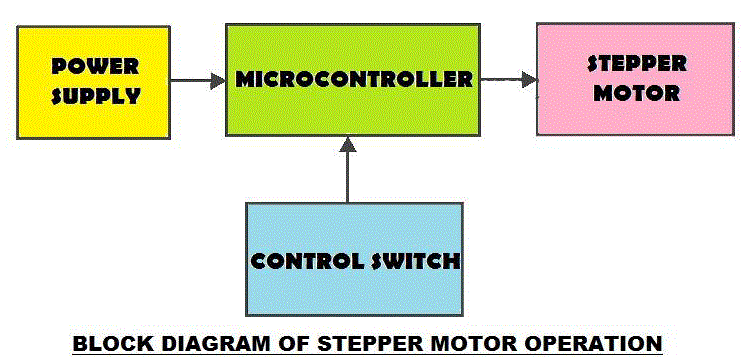 |
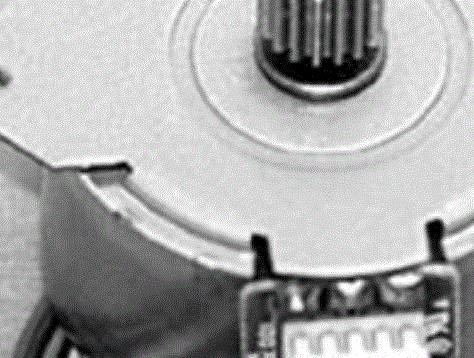 |
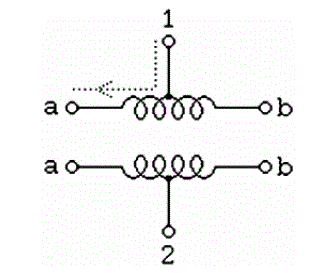 |
 |
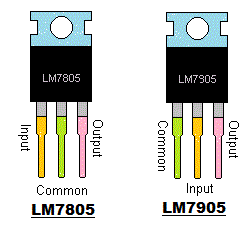 |
| Figure 1 |
Figure 2 |
Figure 3 |
Figure 4 |
Figure 5 |
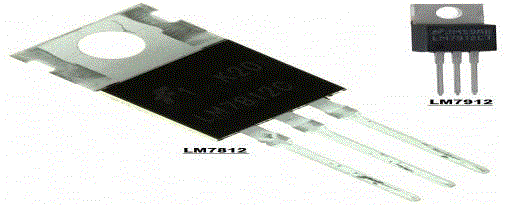 |
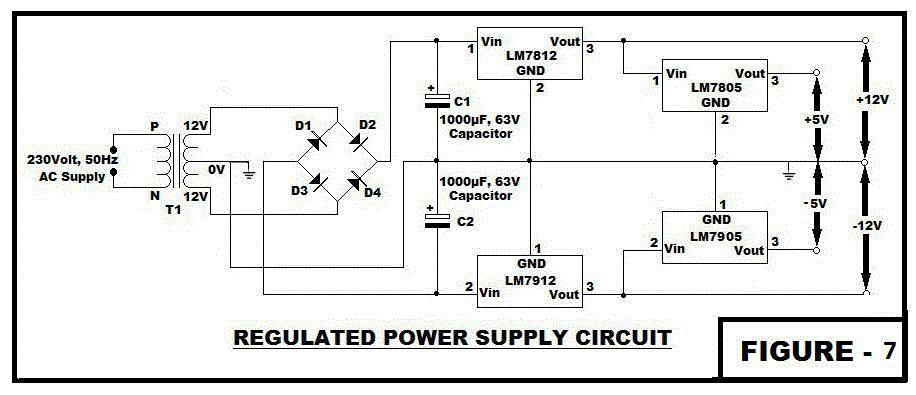 |
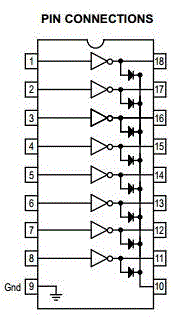 |
 |
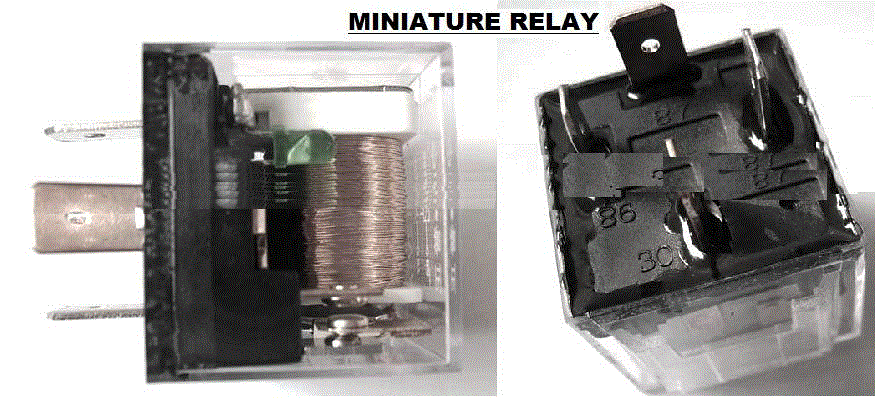 |
| Figure 6 |
Figure 7 |
Figure 8 |
Figure 9 |
Figure 10 |
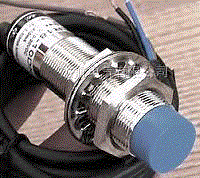 |
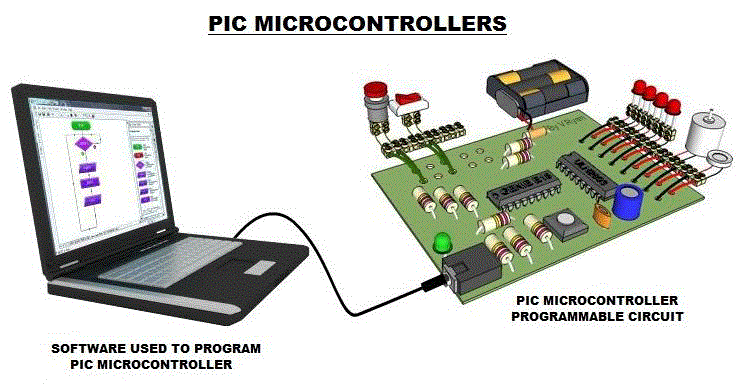 |
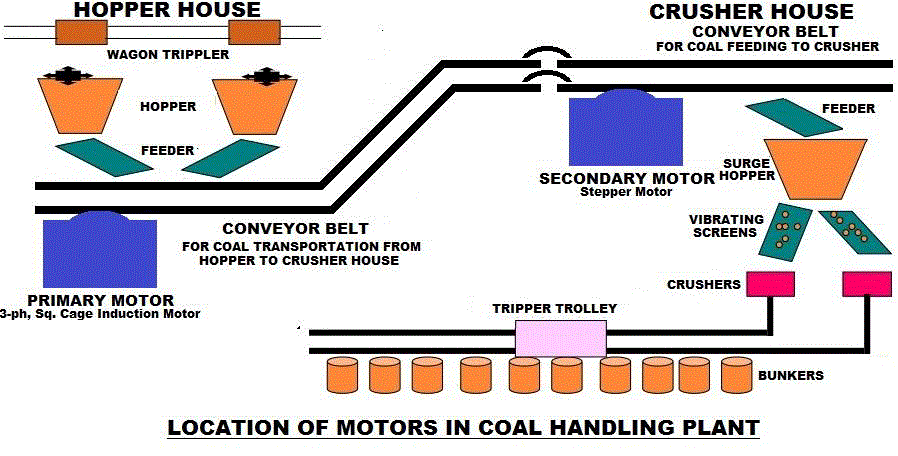 |
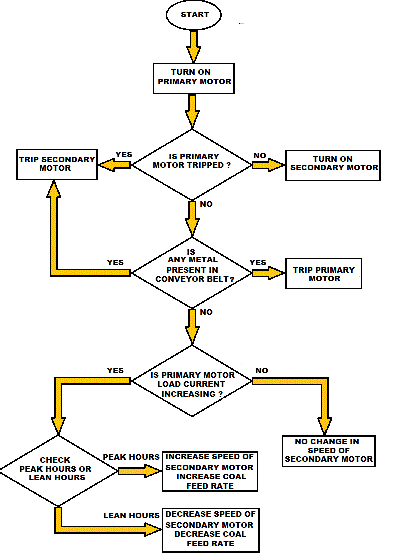 |
 |
| Figure 11 |
Figure 12 |
Figure 13 |
Figure 14 |
Figure 15 |
 |
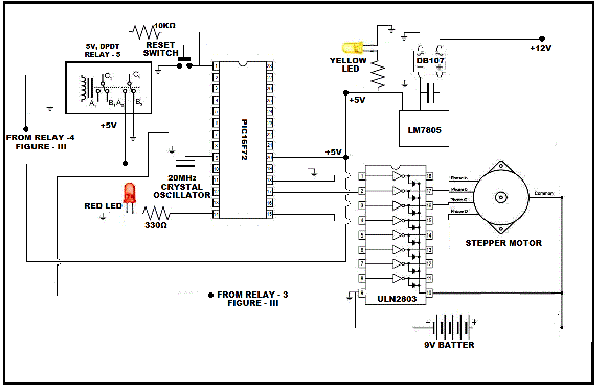 |
| Figure 16 |
Figure 17 |
|
References |
- David E Simon, An Embedded Software Primer, Addison-Wesley Pub Co, 1999.
- Michael Barr, Programming Embedded Systems in C and C ++, O‟Reilly & Associates, 1999.
- Myke Predko, Programming and Customizing the 8051 Microcontroller, McGraw-Hill, 1999.
- Parineeth M Reddy, Embedded Systems, Resonance, December 2002.
- Introduction to Real Time Embedded Systems Part I, Version 2 EE IIT, Kharagpur 2.
- Controlling Stepper Motors with a PIC Microcontroller, Images Scientific Instruments.
- Motors and Control Systems for Precise Motion Control, Core Technologies.
- PIC16F72 Data Sheet, Microchip Technology Inc, 2002.
- Regulated Power Supply, Circuits Today
- Industrial Circuits Application Note Stepper Motor Basics, www.solarbotics.net.
- MPLAB® IDE Quick Start Guide, Microchip Technology Inc.
- IC-PROG Programmer Settings and programming PIC, www.electronicecircuits.com.
|